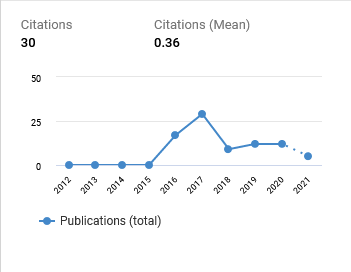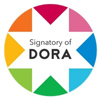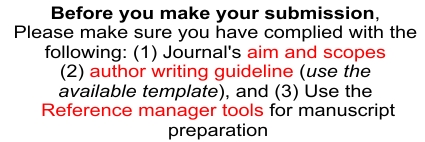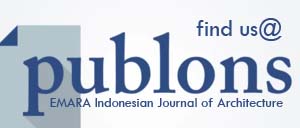Revitalisasi koridor komersial bersejarah Jalan Surabaya dengan konsep retrofitting di Kota Medan
DOI:
https://doi.org/10.29080/eija.v6i1.914Keywords:
area revitalization, commercial corridors, retrofittingAbstract
Jalan Surabaya has been known as a watch-selling district and a Chinatown residential area that, in the Dutch era, was called the Canton Straat. Along with the development of the era of Jalan Surabaya, the visual quality degrades with the historical value attached to it. This research aims to produce the concept of revitalizing the historic area of Jalan Surabaya with a retrofitting approach. A qualitative descriptive method used in the research with the stage begins by analyzing various aspects of the area, including physical, social, economic, and cultural aspects. Three main retrofitting strategies are used to produce a regional revitalization model. The results show that the Jalan Surabaya area's revitalization can be achieved by constructing a Chinatown gate, public open space, public transport infrastructure, signage, parking area, pedestrian arrangement, and historic buildings conservation. For the revitalization model to be implemented, it will require all parties' support, including local community participation.
Downloads
References
Adwitya, F. X. H. (2017). Kajian Pengaruh Perkembangan Activity Support (kegiatan Pendukung) Fasilitas Pendidikan Terhadap Elemen Perancangan Kawasan Pada Koridor Jalan Seturan Raya [Thesis, Universitas Atma Jaya Yogyakarta]. http://e-journal.uajy.ac.id/11915/
Buiskool, D. A. (2019). Prominent Chinese During the Rise of a Colonial City: Medan 1890-1942 [Doctoral Disertation, Utrecht University]. https://www.narcis.nl/publication/RecordID/oai:dspace.library.uu.nl:1874%2F386003
Darjosanjoto, E. T. S. (2012). Penelitian arsitektur di bidang perumahan dan permukiman (1st ed.). ITS Press. https://opac.perpusnas.go.id/DetailOpac.aspx?id=999456
Dunham-Jones, E., & Williamson, J. (2011). Retrofitting Suburbia, Updated Edition: Urban Design Solutions for Redesigning Suburbs. John Wiley & Sons.
Hadinugroho, D. L. (2017). Kajian Model Revitalisasi Kawasan Heritage Kesawan Medan. Prosiding Temu Ilmiah IPLBI 2017, 45–52. https://doi.org/10.32315/sem.1.b045
Harian Medan Bisnis. (2013). Jalan Surabaya, Pusat Bisnis yang Tersisih akibat Persaingan. Medan Bisnis Daily. https://www.medanbisnisdaily.com:443/news/read/2013/11/14/61741/jalan_surabaya_pusat_bisnis_yang_tersisih_akibat_persaingan/
Hoepoedio, B. (2019). Dan Hakkastraat, Medan, 1930. Pinterest. https://id.pinterest.com/pin/475552041905565729/
Liyushiana, & Sianipar, C. (2017). Pengelolaan Koridor Jalan Ahmad Yani Sebagai Daya Tarik Wisata Pusaka. Khasanah Ilmu - Jurnal Pariwisata Dan Budaya, 8(2), 45–59. https://doi.org/10.31294/khi.v8i2.2409
Loho, J. B., Siregar, F. O. P., & Egam, P. P. (2017). Memorial Park Di Manado “Feng Shui Dalam Gubahan Bentuk dan Ruang Arsitektur”. Jurnal Arsitektur DASENG, 6(1), 64–73. https://ejournal.unsrat.ac.id/index.php/daseng/article/view/14790
Lutchman, C., Evans, D., Hashemi, W. S. G. A., & Maharaj, R. (Eds.). (2014). ‘Sino-Portuguese’: The significance of the Shophouse definition in Southern peninsula, Thailand. In 7 Fundamentals of an Operationally Excellent Management System (pp. 83–98). CRC Press.
Lynch, K. (1984). Good City Form. MIT Press.
Martokusumo, W. (2006). Revitalisasi dan Rancang Kota: Beberapa Catatan dan Konsep Penataan Kawasan Kota Berkelanjutan. Journal of Regional and City Planning, 17(3), 31–46. http://journals.itb.ac.id/index.php/jpwk/article/view/4244
Martokusumo, W. (2008). Revitalisasi, Sebuah Pendekatan Dalam Peremajaan Kawasan. Journal of Regional and City Planning, 19(3), 57–73. http://journals.itb.ac.id/index.php/jpwk/article/view/4205
Shirvani, H. (1985). The urban design process. Van Nostrand Reinhold.
Sofyan, A. (2019). Medan aangeboden door de Nillmij_ca 1915 (Indonesian History : Medan, North Sumatra) [Digital map]. Pinterest. https://id.pinterest.com/pin/398357529512817275/
Southworth, M. (2005). Designing the Walkable City. Journal of Urban Planning and Development, 131(4), 246–257. https://doi.org/10.1061/(ASCE)0733-9488(2005)131:4(246)
Williamson, J. (2013). Designing Suburban Futures: New Models from Build a Better Burb. Island Press.
Zwain, A., & Bahauddin, A. (2017). The Sustainable Architectural Values of Eclectic Style Shophouses Case Study: Sun Yat Sen Museum Penang, Malaysia. Panggung, 27(2), 1–9. https://doi.org/10.26742/panggung.v27i2.253

Downloads
Published
How to Cite
Issue
Section
Categories
License
- Authors retain copyright and grant the journal right of first publication with the work simultaneously licensed under a Creative Commons Attribution ShareAlike License that allows others to share the work with an acknowledgment of the work's authorship and initial publication in this journal.
- Authors are able to enter into separate, additional contractual arrangements for the non-exclusive distribution of the journal's published version of the work (e.g., post it to an institutional repository or publish it in a book), with an acknowledgment of its initial publication in this journal.
- Authors are permitted and encouraged to post their work online (e.g., in institutional repositories, pre-print sites, or on their website) prior to and during the submission process, as it can lead to productive exchanges, as well as earlier and greater dissemination of published work.
































